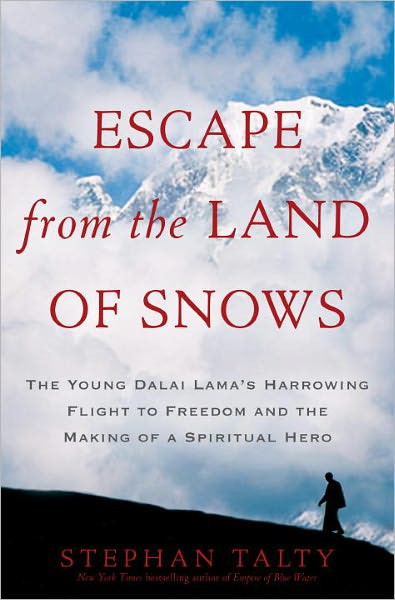
Escape From the Land of Snows: The Young Dalai Lama's Harrowing Flight to Freedom and the Making of a Spiritual Hero PDF
Preview Escape From the Land of Snows: The Young Dalai Lama's Harrowing Flight to Freedom and the Making of a Spiritual Hero
Eric Swanson on *Escape from the Land of Snows*
Eric Swanson is co-author of the New York Times bestselling The Joy of Living and Joyful Wisdom.
Stephan Talty’s Escape from the Land of Snows gripped me from its opening image-–that of a lonely, frightened twenty-three year-old man pacing the gilded cage of a palace garden outside Lhasa--through its final, haunting scenes, which show the Tibetan capital fifty years after the uprising that compelled the young Dalai Lama to escape his homeland in the face of a brutal crackdown by Chinese government forces. This meticulously researched book weaves together strands from a wide array of sources to provide an extraordinarily vivid and compelling picture of a labyrinth of events-–from CIA schemes, to assassination attempts, to kidnapping plots, to the callous and calculating debates of Cold War politics, to shattering betrayals of Tibetan government figures–-swirling around a young man confronting a destiny for which no amount of spiritual or political training could prepare him.
While the outlines of the story are generally known, what fascinated me most was the immediacy that Talty brings to the telling. I felt I was right there, watching the emotional and spiritual transformation of a child plucked from obscurity to become an international icon. Who knew that the Dalai Lama had an early reputation for being headstrong and hot-tempered? That the “palace” where he lived during his early years was cold, drafty, and rat-infested? That discipline was enforced on him, not by a threat to his physical person, but by beatings his younger brother would receive? (The image of a whip hanging on a wall in his room is just one of many haunting details that stayed with me long past the final chapter, a vivid reminder that at an age when most of us are learning rudimentary social skills along with our ABC’s, the Dalai Lama was impressed with the real-life understanding that his least word or action would have consequences for other people). His innocence during his first meeting with Mao-–his willingness to believe the best about people-–is heart-wrenching, as are the excruciating betrayals and the heroic, against-all-odds choices of the bands of supporters and resistance fighters who lead him ultimately to understand that the only way to save his people is to leave them. The agony behind the Dalai Lama’s choice is palpable, unfolding moment by moment against a background of rumors, mysterious oracular pronouncements, and frustrated attempts to communicate with rebel forces and foreign governments.
On every page I could feel the tension rising as the citizens of the capital, alarmed by rumors that the Dalai Lama may shortly be killed or kidnapped, flood the streets to protect him against the mounting threat of increasingly violent Chinese armed forces. I found myself holding my breath as hurried plans to escape in disguise, by night, were stitched together and carried out-–a gamble so desperate it could seem like something out of a spy novel, except that Talty never lets us forget for a moment that every moment was terrifyingly real. Nor does the tension let up during the account of the Dalai Lama’s perilous trek across the highest mountains of the world, pursued by troops and plagued by hunger, freezing temperatures, disease, and an uncertain reception at the end of the journey. Yet it is during this epic flight that the transformation of the young Dalai Lama’s character-–through stages of exhilaration, fear, anger, despair, and finally, exhausted yet triumphant relief-–feels most intensely personal. Escape from the Land of Snows is biography at its best: suspenseful, revealing, and profoundly humane.
From Publishers WeeklyDrawing from written eyewitness accounts and interviews with survivors, Talty (The Illustrious Dead) describes the events in 1959 that irrevocably altered the future of Tibet. He skillfully moves between protests in Lhasa and the Dalai Lama's escape toward the border, tracing stories of the many people involved. Adding complexity to this narrative are details about CIA support of Tibetans fighting against the Chinese regime, the U.S. role in securing permission for the Dalai Lama's entry into India, and the worldwide media frenzy that shaped the public's perceptions of Tibet. Witness reports include those of the Dalai Lama's mother and brothers, rebels and refugees, members of the CIA's Tibetan Task Force, and former prisoners of the Chinese. From these multiple voices the author has woven a vivid picture of a dangerous journey and a country in crisis. The accompanying analysis provides context for the intricate events that changed the young leader into a "movable Tibet," and an isolated mountain society into an international cause and "a place of the mind." (Jan.)
(c) Copyright PWxyz, LLC. All rights reserved.
